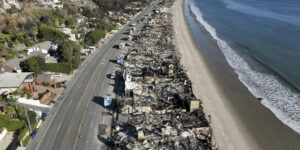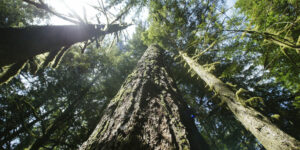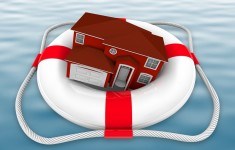The installation of bike lanes along N.J. roadways reduced driving speeds, according to a new study by Rutgers University-New Brunswick.
Researchers made the finding after conducting a study at a high-traffic intersection in a Jersey Shore town to examine ways to reduce the incidence of vehicle crashes.
The introduction of a “traffic calming” effect could enhance road safety and decrease the risk and severity of crashes, researchers said.
The research was published in The Journal of Urban Mobility.
“We are giving you more evidence that bike lanes save lives,” said Hannah Younes, a lead author of the study and a postdoctoral research associate at the Alan M. Voorhees Transportation Center in the Rutgers Bloustein School of Planning and Public Policy. “And it’s not only cyclists’ lives that could be saved. It’s more than that — drivers and pedestrians as well.”
The Rutgers team, which included experts from the Bloustein School, as well as from the Department of Civil and Environmental Engineering in the Rutgers School of Engineering and the Department of Computer Science in the Rutgers School of Arts and Sciences, focused their efforts on Cookman and Asbury Avenues in Asbury Park, N.J.
Cookman, a local two-lane road, intersects with Asbury Avenue, a road that leads directly to the city’s popular Atlantic Ocean beaches.
Drivers heading to the beach often take a legal right turn on red at the intersection’s traffic light, gliding along the soft right turn from Cookman onto Asbury. However, Younes said, drivers frequently don’t come to a stop first, as required, but sail through, creating hazardous conditions for pedestrians and cyclists crossing at the corner.
The research team created a temporary bike lane on Cookman and Asbury Avenues on the side of the road heading toward the beach, delineating it with orange road cones.
Bloustein students assisting the study then surveyed random bike and electric scooter riders using the temporary bike lane about their use of bikes and electric scooters, and their attitude toward bike lanes. Most people surveyed like bike lanes, the survey showed.
Researchers employed computer vision techniques to classify the speed and trajectory of more than 9,000 motor vehicles, collecting data both before creating the bike lane and after, for comparison purposes.
They found that the presence of the delineated bike lane made a difference.
There was a 28 percent reduction in average maximum speeds and a 21 percent decrease in average speeds for vehicles turning right.
For those heading straight and not turning, a smaller speed reduction of 8 percent was observed. In addition, drivers moving at a perpendicular angle to the bike lane did not slow down.
Marking the bike lanes with cones as a clearly delineated space was more effective at reducing speed than a painted-only bike lane.
The painted-only bike lane was associated with a smaller speed reduction of between 11 percent and 15 percent, but only for drivers turning right.
Younes hypothesized that drivers slow down when they see a bike lane marked with the cones because the driving lane is narrower and requires more concentration, and it’s easier to notice cones or planters or some other space delineator than it is to spot painted lines on the road surface.
Other researchers on the study included: Clinton Andrews, a professor, Robert Noland, a distinguished professor, Wenwen Zhang, an associate professor and Leigh Ann Von Hagen, a managing director and adjunct professor, all from the Bloustein School; Jie Gong, an associate professor, and Jiahao Xia, a graduate assistant, from the Department of Civil and Environmental Engineering in the School of Engineering; Dimitris Metaxas, a distinguished professor, and Song Wen, a graduate assistant, in the Department of Computer Science in the School of Arts and Sciences.
(Materials provided by Rutgers University. Original written by Kitta MacPherson.)





















 Is State Farm General Too Big to Fail? Calif. Rate Hearing Concludes
Is State Farm General Too Big to Fail? Calif. Rate Hearing Concludes  Lemonade: 700K Customers on the Car Waitlist
Lemonade: 700K Customers on the Car Waitlist  Dog Bite Claims Soar in Frequency and Cost: Report
Dog Bite Claims Soar in Frequency and Cost: Report  Bill Aims to Make Staged Accidents a Federal Crime
Bill Aims to Make Staged Accidents a Federal Crime 